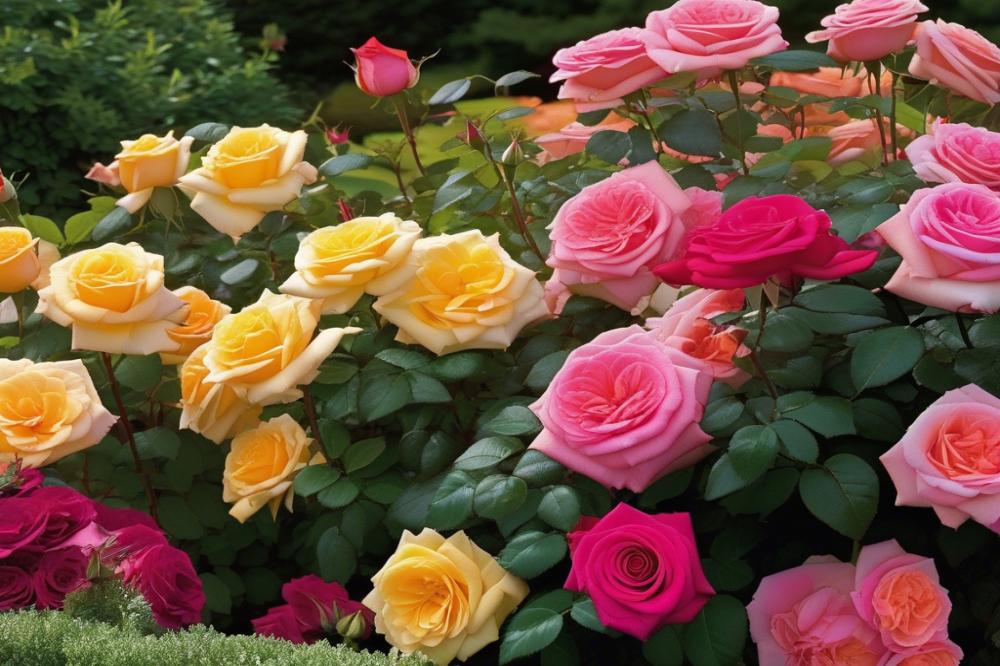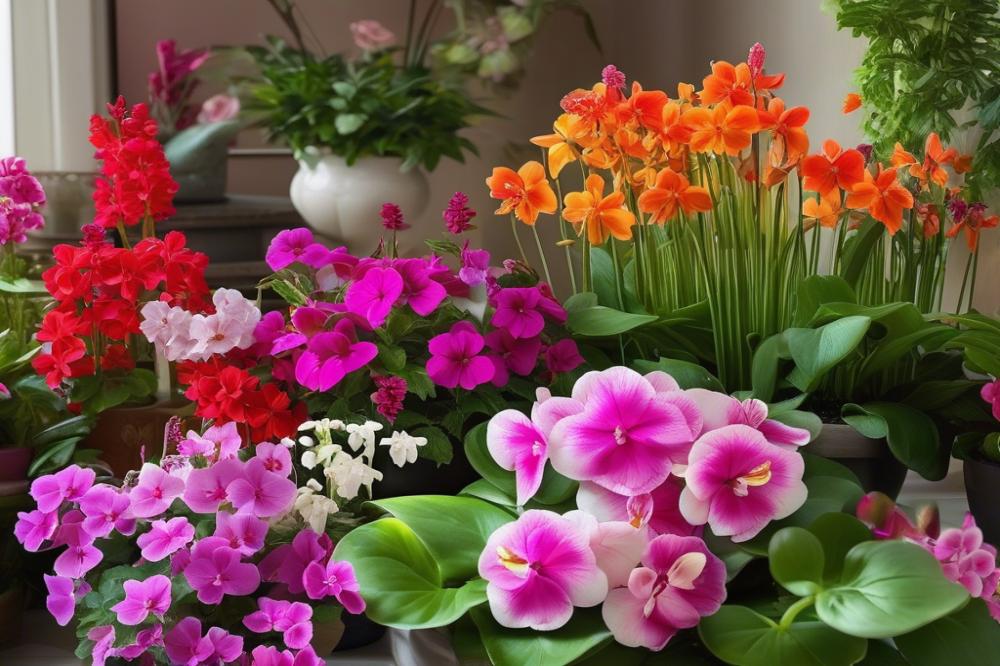Creating a Stunning rose border for Your Garden
Roses possess an innate beauty that captures the hearts of many. Their vibrant colors and delightful fragrances create a strong allure, making them a staple in garden design. A well-planned flower bed with these elegant blossoms can transform any outdoor space into a mesmerizing retreat. This captivating charm is not only for aesthetics; roses also offer numerous benefits. They attract pollinators, add visual interest, and can even enhance property value.
Creating a rose border is a wonderful way to frame your garden. With the right selection of rose varieties, one can achieve stunning seasonal blooms that change with the times. Imagine walking through a corridor of fragrant flowers, the sun casting gentle light on their petals. This immersive experience shows how roses can elevate your landscape to new heights.
Throughout this article, we will delve into essential planting tips that will guide you in your journey. Understanding soil preparation is crucial, as healthy roots lead to flourishing plants. Moreover, we will explore effective pruning roses to encourage abundance and longevity. Attention to garden layout can maximize visual appeal, ensuring your roses are the star of the show while allowing other plants to shine as well.
Regular maintenance is key to maintaining the vibrance of your rose border. Learning how to care for them will ultimately enhance their beauty. Join us as we uncover the secrets to creating a stunning rose border, and let your garden become a sanctuary of floral splendor.
Creating a Rose Border

A rose border can transform any garden. It involves planting a line of roses to create a beautiful, vibrant display. Their appeal lies in the aesthetics and structure they offer to any landscape. The lush blooms create visual interest and draw attention to your outdoor space. Flowers can range from classic reds to soft pinks, making them ideal for any garden layout.
Ideal Locations for Planting
Choose a location that receives plenty of sunlight. Ideally, roses need at least six hours of sunshine daily. This is crucial for healthy growth and seasonal blooms. Look for a spot that is not shaded by trees or other structures. Also, consider accessibility when planting. Keeping roses within reach simplifies maintenance tasks like pruning and watering.
Integrating a Rose Border
Incorporate your rose border seamlessly into existing garden designs. Start by assessing your current flower beds. Determine where the roses can enhance the overall aesthetic. Mixing different rose varieties can add texture and depth to the arrangement. Utilize contrasting flowers to highlight your roses and create a stunning visual experience.
Soil preparation is also vital for success. Use well-draining soil, enriched with organic matter to support healthy growth. If you are unsure about your soil quality, conduct a simple test. After preparing the soil, planting tips come into play. Dig holes twice the size of the root ball and space the roses to promote air circulation. This will help them thrive in their new environment.
Regular maintenance keeps a rose border looking its best. Pruning roses might sound daunting, but it is essential. Trimming away dead or diseased branches encourages new growth. Additionally, consider seasonal blooms and how they can add variety throughout the year. Choosing a mix of early and late-blooming varieties allows for a continuous display of color.
Choosing Rose Varieties

When creating a stunning border in your garden, selecting the right rose varieties is crucial. Many options exist that can enhance the visual appeal of your flower bed. Consider the size of the rose bushes. Some roses grow tall, while others remain shorter. A balanced mix can create depth in your landscape.
Color adds vibrancy to your garden borders. Roses come in countless shades, ranging from classic reds to soft pastels. Think about what colors complement your existing plants. For a cohesive look, choose roses that harmonize with their surroundings. Fragrance also plays an essential role in adding beauty. Highly scented roses can attract visitors to your garden, making it an inviting space.
When planning your garden layout, it’s important to consider seasonal blooms. Different varieties bloom at various times. By planting early and late bloomers, you can enjoy roses throughout the season. This careful planning can keep your flower bed lively and fresh.
Climate and soil conditions greatly influence your choices. Some rose varieties thrive in specific environments. Research which types are best suited for your region. Check that the soil preparation meets their needs. Well-drained and nutrient-rich soil supports healthy growth.
Maintenance of roses, including proper pruning roses, is necessary to keep the plants vibrant. Each variety may have unique pruning requirements. Learning the best techniques will help you care for your plants and promote stunning blooms.
Take your time exploring different rose varieties. Understanding what works best in your environment leads to a flourishing garden border. Happy gardening!
Soil Preparation

Creating a successful rose border begins with excellent soil preparation. First, conduct a soil test. This step evaluates nutrients, pH levels, and overall soil health. Most local garden centers or agricultural extensions provide testing kits. Understanding the soil composition is crucial for effective amendments.
After testing, adjust the soil as needed. Roses thrive in well-drained, loamy soils rich in organic matter. If your soil is heavy clay or sandy, consider mixing in compost. This organic amendment enhances soil structure and provides necessary nutrients for healthy rose varieties.
Pay close attention to soil drainage. Proper drainage prevents root rot, allowing roses to flourish. If your garden layout has low spots that retain water, you might need to build raised beds. This approach promotes better water movement and provides an ideal environment for seasonal blooms.
Focus on the pH balance as well. Roses prefer a slightly acidic to neutral pH, ideally between 6.0 and 7.0. If your soil is too acidic, lime can be added. On the other hand, if it’s too alkaline, sulfur will help lower the pH. Keeping the pH within this range is essential for nutrient absorption.
When getting ready to plant, consider your flower bed’s design. Spacing is important for air circulation and light exposure. Each rose plant needs enough room to grow and be pruned effectively. Dense planting may lead to issues with air flow and increase susceptibility to diseases.
Finally, remember to plan for ongoing maintenance. Regularly check soil conditions as seasons change. Over time, nutrients can deplete. Reapplying compost or using a balanced fertilizer can help maintain the soil’s richness, allowing your roses to thrive year after year.
Planting Tips

Creating a stunning rose border begins with the right planting techniques. Choose a spot in your garden that receives at least six hours of sunlight daily; roses thrive in bright conditions. When planning your flower bed, consider the different rose varieties you’d like to include. They can range from compact species to sprawling climbers. Understanding their mature size will help you decide spacing in advance.
Space each rose bush about 18 to 24 inches apart. This distance allows air circulation, reducing the risk of diseases. In addition, give them enough room to grow their beautiful blooms without getting suffocated. Holes for planting should be deep enough to accommodate the root ball, typically about 1.5 times the size of the root system. The crowns of the roses, where the stems meet the roots, should sit at soil level after planting.
Timing is critical. The best season for planting roses is during spring or fall. At these times, temperatures are more forgiving, which aids root establishment. Preparing your soil ahead of time is crucial. Roses prefer rich, well-drained soil. Amend your garden layout with organic matter like compost to improve nutrient content and drainage.
Water thoroughly after planting. This gives the roots a chance to settle into their new environment. Consistent moisture helps reduce transplant shock and encourages healthy growth. In the weeks after planting, check your roses regularly. Don’t let the soil dry out completely. Deep watering is better than light, frequent sprinklings.
Initial care matters a lot. To promote bushy growth, consider light pruning roses soon after they have settled. This technique encourages lateral branching, leading to more flowers and a fuller appearance. Additionally, protect your young plants from pests or harsh weather by using mulch or protective barriers.
A well-planned rose border not only enhances your landscape but also adds beauty and fragrance. By paying attention to planting tips, you set the stage for stunning seasonal blooms year after year. Adequate maintenance throughout the growing season will keep your roses looking their best, ensuring they become a focal point in your garden.
Caring for Your Rose Border
Maintaining a successful garden layout starts with understanding proper care for your roses. Watering is essential, especially during dry spells. Aim to water deeply but infrequently. This encourages deeper root growth and helps combat drought.
Fertilizing provides vital nutrients. Use a balanced fertilizer formulated for roses. Apply it in spring as new growth starts. Follow up with additional feedings in mid-summer to promote seasonal blooms. Using organic options can enhance soil preparation over time, creating a richer environment for your flowers.
Managing pests is another critical aspect of rose care. Regularly inspect plants for signs of trouble, such as aphids or spider mites. Handpicking pests can be effective for small infestations. In larger cases, consider using insecticidal soap. This method is less harmful to beneficial insects.
Pruning roses serves both health and aesthetics. Remove dead or damaged wood in early spring before growth begins. This practice helps promote airflow within the flower bed, reducing the chance of diseases. Shape the plants to encourage a pleasing form. Trim any overly vigorous growth to maintain balance among varying rose varieties.
In the rush of the growing season, don’t forget to mulch around the base. This helps retain moisture and suppress weeds, adding to the overall beauty of your garden borders. With a little effort and attention, your garden will flourish, showcasing an array of stunning colors and fragrances.
Seasonal Blooms and Continuous Interest
Creating a stunning rose border requires thoughtful planning to provide blooms throughout the growing season. Choosing a variety of rose types is essential. Different rose varieties bloom at different times. This means you can enjoy roses from spring to fall. Consider including early bloomers like ‘April in Paris’ and late bloomers such as ‘Chrysler Imperial’ in your flower bed.
Companion planting plays a significant role in enhancing the garden’s appeal. Use plants that bloom in tandem with your roses. Adding lavender and catmint can attract pollinators while providing a lovely fragrance. They also help in filling gaps between rose bushes. Place taller flowers, like hollyhocks or delphiniums, behind your roses. This layering adds depth and visual interest.
Don’t overlook soil preparation. Good soil is vital for healthy plants. Amend your soil with compost to boost nutrients. Make a habit of testing your soil pH for optimal growth. Keeping pH levels balanced will help your roses thrive. During planting, mulch around your new roses. This helps retain moisture and suppresses weeds.
For an eye-catching garden layout, use a mix of colors. Arrange different rose shades alongside vibrant companion plants. Greens and golds provide a stunning contrast that highlights your blooms. Choose plants that will not overshadow your roses. Daisies or yarrow work well without competing for attention.
Regular maintenance is crucial for continuous blooms. You will need to dedicate time to pruning roses correctly. This practice encourages more vigorous growth. Make sure to remove any dead or diseased wood. By doing this, you promote a healthier garden border that flourishes season after season.
Creating a rose border that blossoms continuously is an achievable goal. A little planning and care go a long way. You’ll be rewarded with beauty and fragrance that transforms your outdoor space. With these planting tips and ideas on companion plants, you can fashion a vibrant floral display.
The Joy of a Stunning Rose Border
Creating a beautiful rose border brings immense satisfaction. Throughout this article, we explored the essential steps in designing and planting your perfect flower bed. From selecting the right varieties to ensuring proper care, each detail plays a significant role.
Embrace the idea of layering colors and textures. Varieties like hybrid teas, floribundas, and climbing roses can transform your landscape. The right arrangements will elevate your garden’s aesthetic and create a space that feels inviting.
Enjoying the process is just as important as the final product. The act of nurturing these plants can provide a deep sense of peace. You’ll learn patience and responsibility, all while watching your hard work bloom beautifully.
Don’t hesitate to experiment with different colors and arrangements. Each garden is unique, reflecting your personal style. Each attempt, whether a success or a lesson, helps you grow as a gardener.
Take pride in your rose border and the environment you create. The joy and beauty it adds to your space are unmatched. Remember, gardening is a journey, not just a destination. Lane into this adventure with enthusiasm and open-mindedness. Happy gardening!



